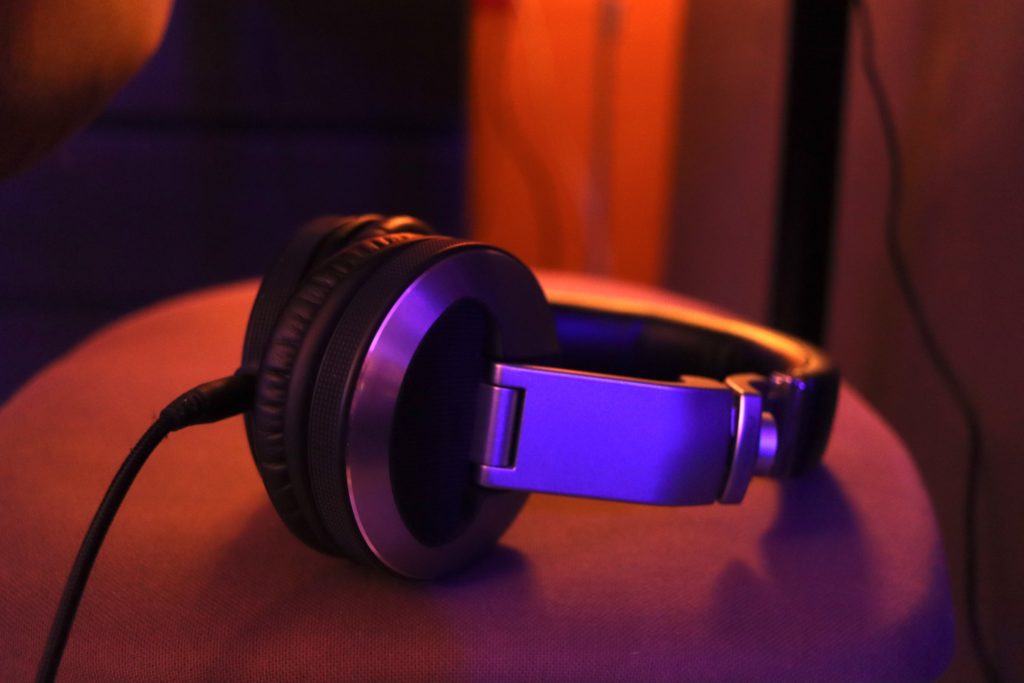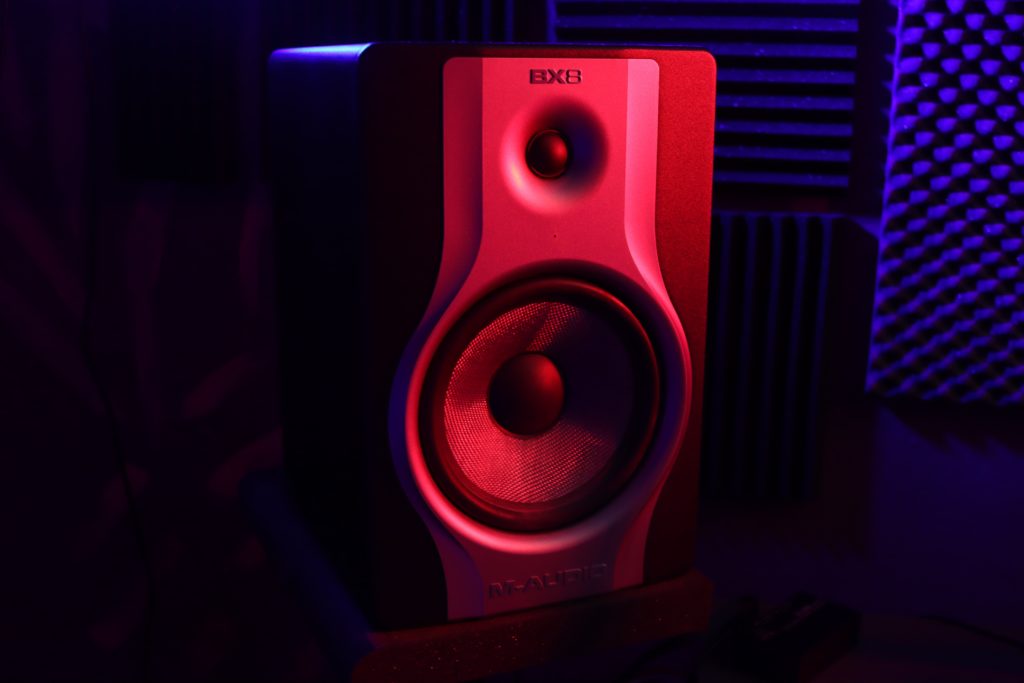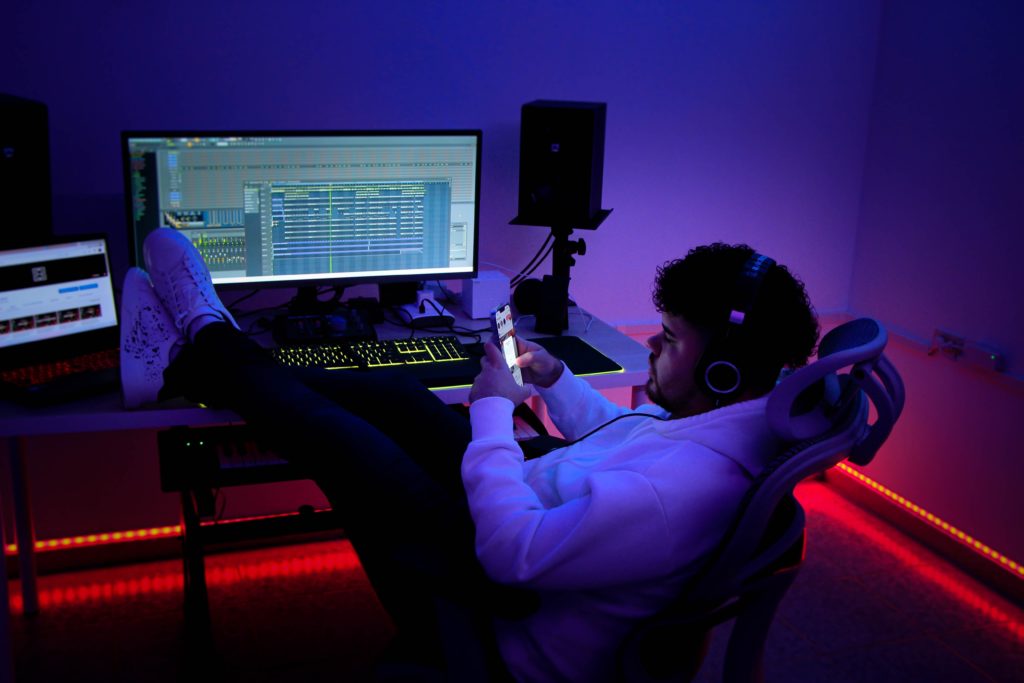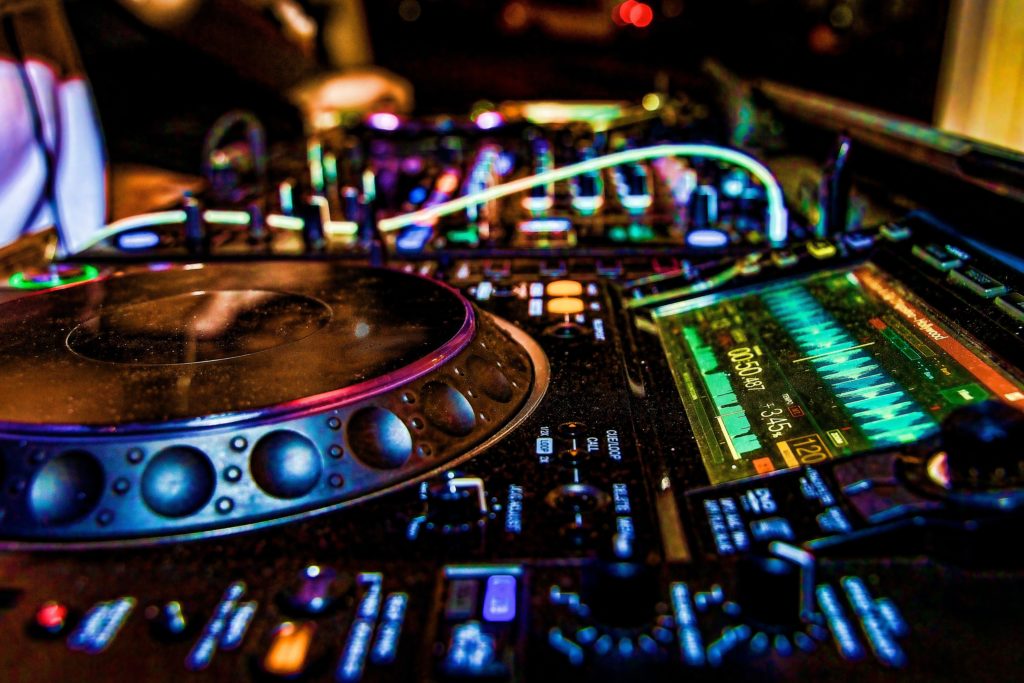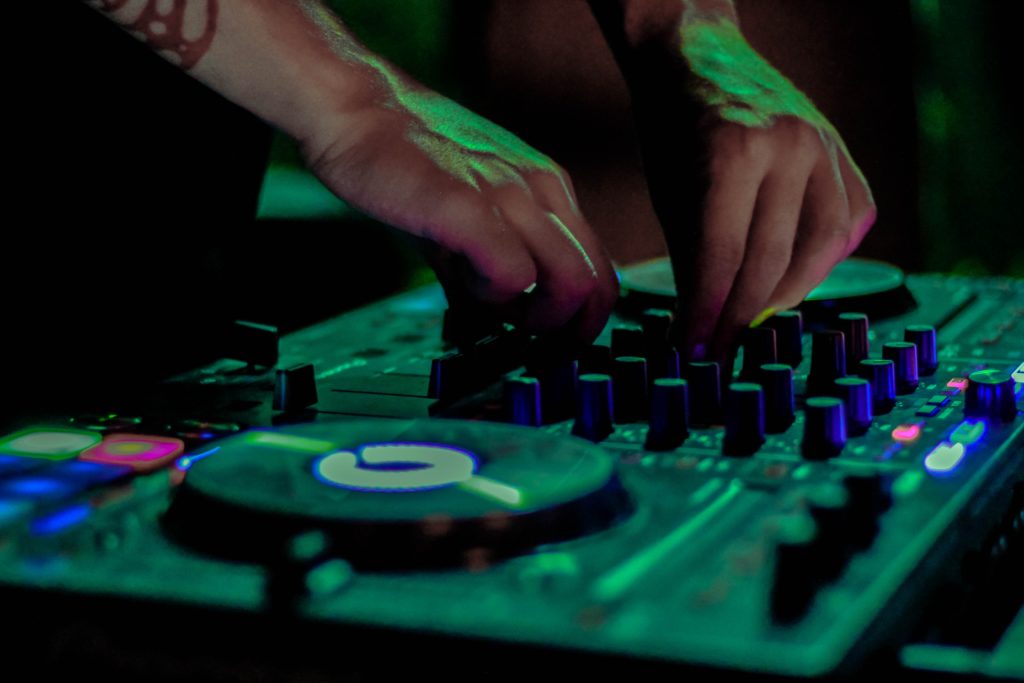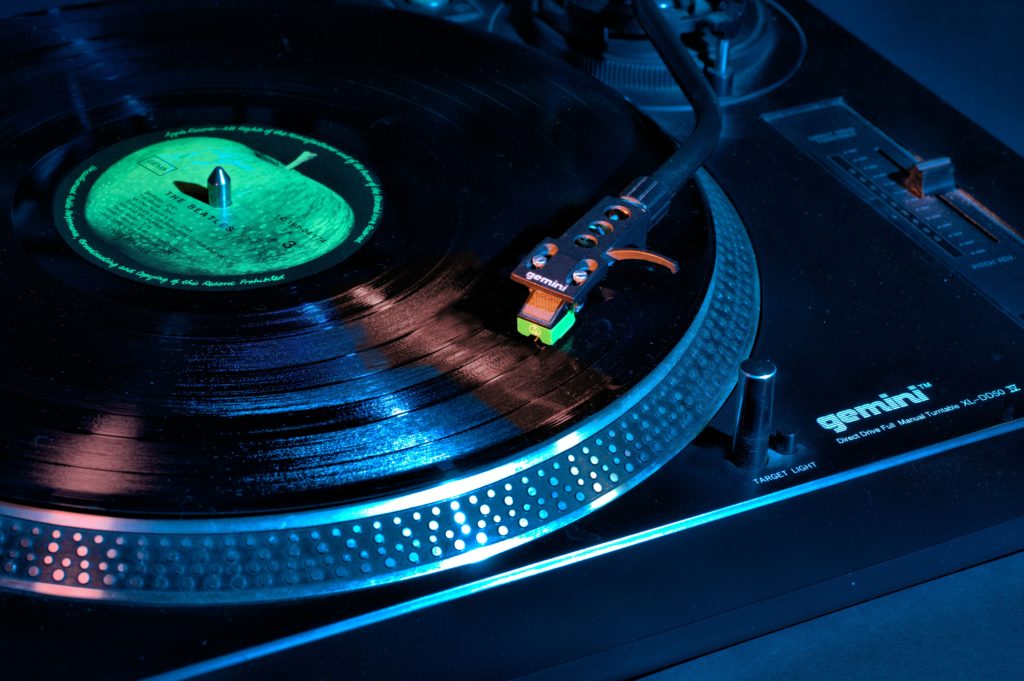Many piano VST’s are thought to sound more realistic than the piano engines found in keyboard workstations, etc. When you consider the processing power of high-quality PC’s and Mac’s, it’s no surprise that some plugins can push the boundaries further than a physical instrument. In this article, we will list and review our top piano plugins.
Pianos are one of the most amazing musical instruments in the world, but they’re also one of the most expensive. Fortunately, thanks to technology, it’s now possible for musicians to use a piano without actually needing to purchase one.
Piano Virtual Studio Technology (VST) is a software that emulates a piano. You just need a MIDI controller keyboard, preferably with 88 keys like that on a real piano. There’s no piano hardware involved and the sound is generated digitally through the software. This plugin is usually standalone but can also be hosted in a DAW. The piano VST can provide a great addition to your music and will sound just like a piano. It’s a simple, convenient, and economical solution to creating piano compositions in your studio.
The quality and depth of the sampling and modeling have gone to epic proportions and now you can have legendary instruments recreated on your screen. The sound is perfect, the playability nuanced and adaptable to whatever quality of MIDI controller you have plugged in. A piano VST instrument can be an extraordinary thing and all you have to do is sit back and enjoy playing.
Virtual pianos appear in all sorts of workstation style VST Instruments but for this roundup, I’m looking for those pianos that are deliberately crafted to be exemplary. Where the modeling or sampling has gone far beyond the sound of an acoustic instrument and into the essence of what draws us to this sound in the first place. Some on this list are instruments dedicated to the piano, others are part of larger collections of similar instruments.
What Is the Best Virtual Piano Software?
Well, that will depend on how you approach it, but probably the most well regarded and most complete piano VST is the Pianoteq from Modartt. But you’ll find many on this list that will offer a sumptuous sound and the stunning realism of an authentically modeled instrument. These are the sorts of instruments that professionals would use in studio recordings when the real thing isn’t available.
What Is a Piano VST Plugin?
Well, a “VST” is a software plugin format that uses your computer to emulate a real or imaginary musical instrument or effect. So, a piano VST would be a software version of a real piano. You would more accurately call it a “VST Instrument” or “VSTi” in order to show that it’s a plugin that makes sound rather than an audio effect plugin which is usually what “VST” refers to.
VST stands for “Virtual Studio Technology” and refers to instrumental or effects plug-ins within a DAW (Digital Audio Workstation) on your computer.
You may also hear VST instruments referred to as samples. Samples usually come in a library bundle called a “sample library.” Some well-known libraries include Native Instruments, Output, Vienna Symphonic Library, EastWest, and others.
In order to connect to a sample library, there is a program that hosts sound patches, otherwise known as a sampler.
Some well-known hosts include Kontakt 6 by Native Instruments, Play by EastWest, and Vienna Ensemble Pro. Think of these as “folders” containing different sampled sounds and allowing you to play them. For instance, opening the Kontakt player in a DAW will open a window where you can select the sound your piano will produce on a certain track. Selecting a trumpet sound will output your piano to sound like a trumpet.
Note that the instrument stays true to its range, so if you press the low keys on your piano, you won’t hear anything since a trumpet’s range doesn’t extend that low!
The sampled sounds are prepared by real people who devote hours recording a single note on an instrument in several different ways (such as staccato, legato, lower attacks, higher attacks, with a mute, etc.).
Most samplers can work as a standalone function on your computer (without the use of a DAW), so you’ll be able to play and hear the different samples.
Likewise, some VST instruments have standalone versions that don’t require any additional software whatsoever. However, to record and edit compositions, you’ll probably need a DAW.
Some industry-standard DAWs for composition and high-quality recording include: Cubase 10, Logic Pro X, Pro Tools 12, and Digital Performer 10.
GarageBand is an outstanding DAW for beginners (and comes installed with every Apple computer and device), and Ableton Live is a well-known DAW for producing electronic dance music (EDM).
When you connect your digital keyboard to your computer and use sampled piano sounds through a sample library, you are transferring the note you play on your keyboard into a MIDI format. MIDI is a musical language understood by your computer that transfers your musical performance (the notes you play, the velocity at which you play them, their dynamics, and their articulations) and outputs this through your DAW.
MIDI is an incredibly powerful tool that enables you to edit note pitches, the articulations of notes, and the phrasing and lengths of notes, as well as the dynamics, volume, and use of a sustain pedal. Note that using a VST instrument is using a sampled or modeled sound, not the sound of your digital piano.
Why Should I Use VSTs?
VST instruments offer a range of options for your recording needs. You may not like the preset sounds in your digital keyboard, or you may want to broaden your sound palette with different piano samples or to experiment with other instruments.
This may seem confusing, but you can use your digital piano as a MIDI controller, allowing you to play notes in a piano fashion, while your computer will output them as other instruments, such as a guitar or a violin, via VSTs.
Vocalists often ask me for a piano-backing track for a performance, but they need it in a different key. Instead of playing in another key and re-recording the original performance, I can move the MIDI notes in my DAW to transpose the sound.
You have the power to move around, change, and remove notes while experimenting with how they will be played. Is it a staccato passage? Should the pedal lift at the end of the phrase, etc.?
Recording MIDI in a DAW is less daunting since you have the ability to edit incorrect notes or change one note that was pressed a little too loudly.
This saves you time by eliminating the need to re-record or ‘punch in’ later (re-recording a passage within the piece). You can change a sample once you’ve recorded in MIDI, so you may audition various sounds, then choose the one you prefer.
What Makes a Good Piano VST?
The piano is undoubtedly one of the most beautiful sounding and elegant instruments, whose invention can be traced back to 1700. Selecting and buying a real acoustic piano is a complicated affair, to say the least. Luckily, as technology has pushed forward, owning a piano does not have to mean spending a fortune on a giant delicate instrument. You’re probably aware of this since you’re here reading this guide! As the piano has gone digital, there are two ways to own it in that form:
- Digital Piano: A digital piano is a self-contained hardware instrument that emulates a real acoustic piano. It’s typically an 88-key weighted keyboard, it probably has onboard speakers so you can hear yourself play, a headphones jack for quiet practicing, and it primarily specializes in piano sounds (it may also have organs and strings). Yamaha, Casio, Kawai, and a few other brands are making great digital pianos these days. In fact, we have an entire guide especially dedicated to selecting the best digital piano.
- Piano VST/Plugin: A piano VST (Virtual Studio Technology) is a software that emulates a piano. It’s just software, no hardware. Meaning, to play it like a piano, you need to have a MIDI keyboard controller (preferably with 88 weighted keys if you want to simulate a real piano). You also need a computer to run the software on. The piano plugin can either run as a standalone program, or be “hosted” inside of a DAW like Logic, Ableton, or FL Studio.
If you’re on the fence between the two solutions, they both have pros and cons. A digital piano is self-contained, meaning you ONLY need it and you can play by yourself or in a band. It’s much more portable than a real acoustic piano, but it can still be bulky and heavy. You can spend as little as $200, or several $1000s if your budget allows. A piano VST means you need to own several things: a relatively modern and powerful computer with the piano plugin installed, speakers or headphones, and an 88-key MIDI keyboard. Some piano VSTs are downloadable for free, and some cost several $100s. Of course, it’s not an apples-to-apples comparison to a digital piano, since you have to consider the cost of all the things we mentioned (which can be high).
Types of Piano VSTs
Alright, so let’s say you’ve decided a piano VST is the right solution for you. How do you decide which one to buy? Let’s talk about the two main types of piano plugins.
The first is sample based. This is where the piano sounds in the plugin are recorded (or sampled) from a real piano. The piano VST manufacturer goes into a studio, and together with a recording engineer, various microphones are placed in and around the piano. All 88 keys are recorded multiple times since it’s important to capture variations of each individual key. Since a piano is an acoustic instrument, many dynamics are at play that are extremely difficult to emulate in software. Thus, the more variations of the real piano sound are recorded, the better and more realistic the piano VST can sound. When you buy a sample-based piano plugin, you’re essentially buying a set of recorded sounds.
Pros of a sample-based piano VST:
- These are the most realistic sounding piano plugins, since they are actual recordings of real pianos.
- The pianos used to record are iconic – from Steinway to Bösendorfer to Fazioli. If you’re going to spend a lot of time and money recording a piano, it might as well be an amazing, top of the line, very expensive piano. The recording equipment used is also top of the line.
Cons of a sample-based piano VST:
- File size can be huge, often filling up a small hard drive.
- You’re limited to the piano model that was recorded. If your piano VST is recorded from a Steinway Model D Concert Grand, it will always just be that (as great as that piano is, you might crave variety).
- Since you’re buying a set of samples, you might need a sampler software like Native Instruments Kontakt to load in the samples and play them.
- They tend to be pricier.
The other type of piano VST is modeled. This is basically where the plugin manufacturer coded up some software — an engine or algorithm if you will — that sounds as close as possible to an acoustic piano. This is much more akin to the way popular synthesizer plugins work, like Sylenth1 or Massive.
Pros of a modeled piano VST:
- The software has a much smaller file size and loads quickly.
- You may get multiple piano styles/types/brands, and the piano sounds are very customizable.
- Doesn’t require a software sampler to run.
- Tends to be more expressive. Since you’re not reliant on recorded samples, the nuances can be as detailed as whatever the manufacturer is willing or able to program.
Cons of a modeled piano VST:
- Realism suffers.
- It’s near impossible to perfectly replicate a real acoustic piano without actually recording one.
Neither style of piano VST can be considered better or worse, as you’ll see in our best piano VST list. There are some fantastic versions and some not-so-great versions of each. Much depends on what you are looking for, and what type of a piano player you are. For example, if you are a classically trained concert pianist and are used to playing on high-end Baldwins and Yamahas, then perhaps you are looking for a sample-based piano VST that gets the closest to those specific pianos. If you’re an electronic music producer and piano player who wants the flexibility of playing the piano solo or layering it in a mix, then maybe you want a modeled piano plugin that offers a mix of traditional and nontraditional piano sounds. Again, these are just examples to illustrate the point that there is no hard and fast rule to who should buy what. Chances are as you research the piano plugins we recommend here, you’ll start getting a good feeling for what’s best for you.
Things To Consider While Searching For The Best Piano VST
Before getting into any of the features of the various piano VSTs, it’s important to remember that there is not one piano VST that will suit every producer. Your music production needs to differ from others, and you will need to take that into account when considering the features that you’re looking for. For example, if you’re producing trance, you may want to look for a slightly more realistic-sounding piano VST plugin. This is just one of the many elements to look at, though.
Here are some of the most important considerations:
- Type (Sampled vs. Synthesized piano VST)
- Customizability
- Price
- Compatibility (Windows vs. macOS)
Why is the type of piano VST important?
Piano VST plugins come in two types. They’re either synth or sample-based. Understanding the benefits of a synth-based vs. sample-based piano VST will help you decide which one is right for you. Synth based piano VST plugins tend to have a smaller file size, are more customizable, and don’t require a software sampler in order to run. However, they tend to sound less realistic than sample-based piano VSTs.
On the other hand, sample-based piano VSTs often sound much more realistic and high quality. One detraction of a sample-based piano VST would be that file size can be huge. In addition, they often have limited customizability and a sampler software may be needed.
How does customizability affect my choice?
Sometimes having more customizability is a good thing. You may want to pick a piano VST with more features available if you’re looking to create a unique sounding piano. In other cases, a traditional piano VST is all that you need to get the job done. If you find yourself in this situation, having less clutter and fewer settings can get you started producing faster and benefit your workflow.
What’s a good price for a piano VST?
There are plenty of amazing and affordable piano VST plugins out there. And the best news? Some of them are completely free. If you don’t mind spending some cash, though, there are a wide range of paid piano VST plugins for you to choose from. In this case, the amount you should spend will depend on your situation. If your production is ready for a higher quality piano VST, then spending some money may be in your best interest. On the other hand, if you’re just learning how to produce music, it may be better to start off with a free piano VST.
Compatibility
Ah…yes, compatibility.
Compatibility is always important when it comes to software. We always recommend that you check if the software you’re considering downloading or purchasing will work with your operating system and digital audio workstation (DAW). It’s also important to check whether a VST will require the use of an iLok (license management) in order to run. If everything checks out, you should be good to go with your newest piano VST!
Getting The Right Equipment
To use VSTs, you will need access to the following:
— A digital piano or MIDI keyboard with access to either a USB Type B port or a traditional MIDI connection common to older keyboards.
— A DAW, such as Logic Pro X or Pro Tools 12 (in many cases you’ll be able to use your VST as a stand-alone but for more functionality, a DAW is recommended)
— A computer or laptop (recommended with at least more than 10% storage space remaining and at least 16GB RAM). This space enables you to download samples that may require sizable storage space, and the RAM empowers you to work quickly and efficiently without lag time in your DAW. Check out our recommendations for best laptops for music production.
— A set of monitor speakers or headphones
— Optional: an internal SSD to replace your computer’s hard drive (resulting in more CPU power and less PC crashes) and an external SSD for storing your samples.
If you can only afford one (since SSDs can be pricey), look to purchase an external SSD for storing your samples on the drive and for saving CPU usage.
— For advanced users: you may also wish to utilize a ‘slave’ computer, which is usually a higher-end desktop PC or Mac Pro from which you can run sample libraries without using your primary PC’s CPU.
The more samples you have, the less efficient and longer it will take to work with your DAW, so many industry composers use a slave PC to save on CPU usage.
To connect the two computers, you’ll need Vienna Ensemble Pro, which acts as a sampler to host your samples from the ‘slave’ computer to your main computer.
Note that the two computers do not need to be the same model.
In my case, for instance, my ‘slave’ computer is a PC and my main computer is a Macbook Pro. Both computers run an internal SSD and my PC hosts 64GB RAM for running samples more efficiently.
This equipment setup is entirely optional and depends on your workflow.
If you wish to use a few samples for different sounding pianos, you may work easily from a single computer or laptop and will not need a lot of RAM to do so (at least 16GB is recommended, but 8GB RAM is still workable).
Alternatively, you may feature an audio interface within your setup.
With an audio interface, you will be able to connect other instruments and microphones to record them, so you are not limited to a piano as your controller within your DAW.
You’ll be able to record the audio of different instruments by converting an analog signal into a digital one, and you will not be limited to your MIDI.
Without further ado, here are the results for the best piano plugins based on recommendations and reviews from musicians around the web. We’ll also show you where you can buy them (we only show stores we trust and have worked with before like Amazon, Musician’s Friend, and Plugin Boutique for example).
The Best Piano VSTs – How We Made This List
To start off, we want to tell you what led us to want to create this best piano VST guide. Some time ago, we noticed a pattern while browsing our favorite forums and musician communities on the web. We noticed that certain threads appear over and over again, with the same questions being asked every two weeks (or more often in some cases). We took one such question, “what studio headphones should I get?” and turned it into our best studio headphones guide. We spent days – weeks even – combing through every single thread we could find and tallied up the results, so we could put an end to that question once and for all, and get a snapshot of what the best studio headphones are as recommended by musicians from all walks of life.
We have several piano players on staff at Music Giants, and a few of them are classically trained pianists. We noticed the same thing, with people asking, “what is the best piano VST?” or, “what is the best free piano VST?” in forums at a staggering rate, each time giving rise to a heated discussion.
So, we went to work! Many days of research and several sessions later, we have come up with a list of the best piano plugins (both free and paid). We combed through 22 forum threads, many spanning multiple pages, and tallied up a vote for every favorable piano VST review or recommendation from an owner. We also took the best sound bites, to get a feel for what people like and dislike about the various piano plugins. We hope you enjoy this list, and that it helps you make a buying decision, and discover piano plugins you perhaps didn’t even know about!
What you’ll find here are lovely sounding pianos that when coupled with a good quality MIDI controller will give you immensely playable pleasure.
In no particular order, the best Piano VSTs:
- Garritan Abbey Road CFX Concert Grand
- Synthogy Ivory II Studio Grands
- Spectrasonics Keyscape
- Modartt Pianoteq
- Vienna Imperial
- E-instruments Session Keys Grand S
- VI Labs Ravenscroft 275
- UVI Grand Piano
Best Piano VSTs 2021
Our Recommendation: Garritan Abbey Road CFX Concert Grand

Garritan takes on a Yamaha CFX Concert Grand Piano but it’s not just any old piano sitting around somewhere, this is the Yamaha CFX that sits in the famous Abbey Road Studio A in London. Some of the world’s finest musicians have sat on that stool and tinkled on those ivories. More importantly, for this instrument is that some of the “world’s best Engineers” helped set up some of the “world’s greatest microphones” and equipment to enable the capture of this stunning instrument.
Studio One is a huge space that can accommodate 110 piece orchestras. It has a warm and clear sound, taking full advantage of the room’s 2.3 seconds reverb time. It has hosted everything from the London Symphony Orchestra to The Beatles’ famous live performance of “All You Need Is Love.” The Yamaha CFX was hand-built in 1991 by a small team of experienced and skilled craftsmen. It’s a refined and expressive instrument with enough tonal presence to be heard over an entire orchestra.
The microphone placements for the recordings formed three discrete perspectives. They call these “Classic” for the most natural tone, Contemporary to emphasize the brightness and attack, and then Player offers the experience of sitting on the stool. From those recordings, various presets have been created which reflect further audio processing to create a sound for many different occasions.
Pros & Cons
- Top class Yamaha CFX piano
- World-class recording environment
- High-end equipment used throughout and it shows
- Multiple perspectives and presets
- Requires a multi-core processor and a fast drive with 133GB free for a full installation.
- Very specifically this piano may not be for everyone.
Why We Recommend: This VST is definitely our favorite. It truly feels as if you’re sitting in the studio at the piano. The clarity and overall sound quality of the instrument live on through the virtual sound. You can imagine how many music legends must have used this very same piano in their compositions at Abbey Road.
Synthogy Ivory II Studio Grands
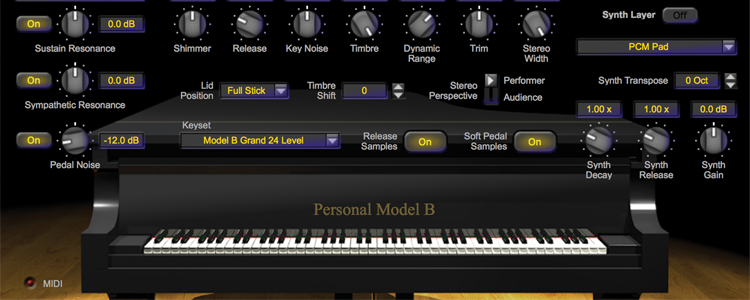
Synthogy has been sampling pianos for a very long time. This latest release features two very different pianos, the Steinway B Grand Piano and the Bosendorfer 225 Grand Piano. The Steinway sits in the Power Station New England in Waterford and the Bosendorfer resides in the Firehouse Recording Studios in Pasadena California. Both were recorded with all the expertise that Synthogy has built up over the past decades.
For these sorts of instruments, the location was key. The Power House NE was modeled on the famous Power Station/Avatar space in New York and this recording was engineered by Mark Donahue. The Firehouse is a historic studio space and engineered by Tony Sheppard. Both pianos were recorded in exacting detail with multiple microphone setups and perspectives.
These instruments are built in the new Ivory 2.5 sound engine using 112GB of core library. Each note is sampled to 24 layers of velocity with multiple levels of soft pedal and release samples triggered by velocity and duration. They even included the pedal noise. For processing, they use a custom Soundboard Emulation DSP, digital effects and Harmonic Resonance Modeling for a truly sympathetic string resonance.
Pros & Cons
- They’ve done this before
- Two different pianos with different characters
- A lot of user control over tone and perspective
- Interface a little dated
- Very specific pianos that won’t suit everyone
- No alternative mic perspectives
Why We Recommend: This VST can produce any sound you could possibly want. Whether you want the smoothest jazz or the most vibrant pop, the samples on the Ivory II will take your music to the next level. It’s dynamic and is suitable for anyone looking for that authentic piano sound.
Spectrasonics Keyscape
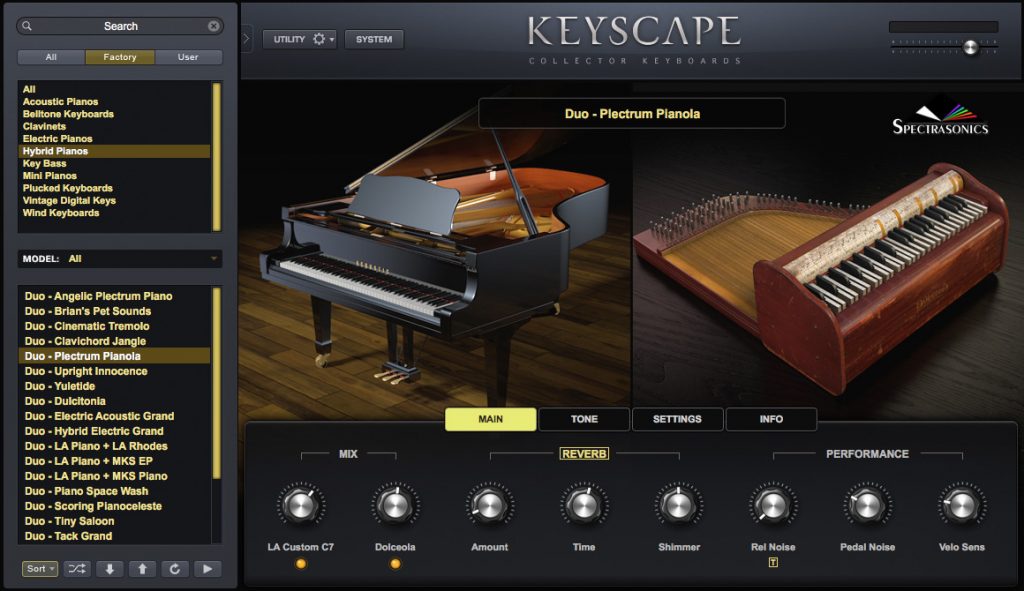
Keyscape is an enormous collection of keyboards. Where other VST Pianos focus exclusively on a single instrument, Keyscape takes in 36 models of keyboard instrument. Many of them are electric and eclectic but there’s a wonderful Grand Piano, a pair of uprights, a Butterfly Piano, and 3 Toy Pianos. But we’ll just focus on the Grand piano.
The LA Custom C& Grand Piano is a unique instrument owned by LA piano technician Jim Wilson. It has some special modifications taking “Blue Point” hammers and very rare felt that contribute to the very wide tonal spectrum. It has an amazing dynamic range and color palette.
Spectrasonics spent a year perfecting this instrument and modeled everything from the subtleties of pedal noise to the intricate interaction of the release overtones.
Keyscape features innovative harmonic controls including “Color Shift” adjustments and “Character” control that enable a wide range of piano sounds to emerge from the same instrument. You can also match the instrument to the velocity curve of your MIDI controller making the playing experience far more realistic. You probably wouldn’t buy Keyscape just for the Grand Piano but this is an inspiring piece of work that contains a wealth of keyboard sounds and possibilities.
Pros & Cons
- Huge range of sounds from rate and beautiful instruments
- Innovative character and color modeling
- Duo mode where you can combine two instruments
- Might be a lot more than you need
Why We Recommend: You can’t go wrong with Spectrasonics. Whether you’re a beginner producer or a seasoned pro, it’ll work well with your musical decisions. The wide range of choices lets you experiment with your music and produce high-quality tones across the board.
Modartt Pianoteq
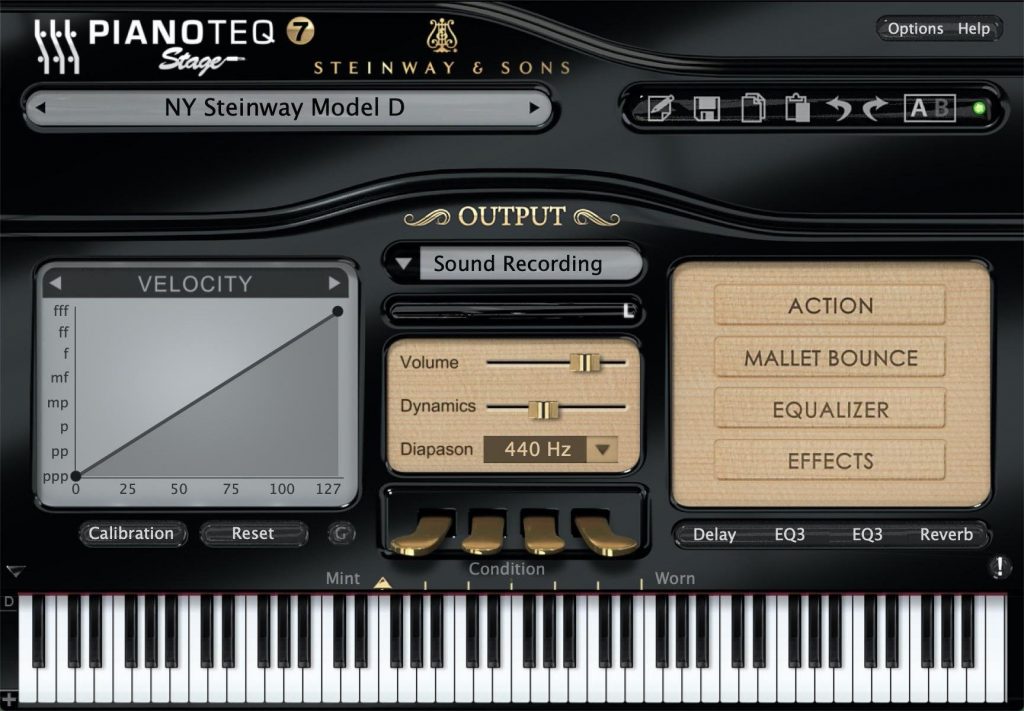
When people talk about virtual pianos, Pianoteq is invariably the first one that comes to mind. It’s the daddy of Piano emulations. It’s won more awards than any other virtual piano and is probably the deepest, widest and most beautiful. The key to all this is that it doesn’t use samples – Pianoteq uses physical modeling. A physical model is a computer emulation of every part of a piano’s physical being. This enables software to change and emulate every possible combination, every nuance, every resonant string, or mechanical noise. It’s all in there and takes up next to no space on your hard drive.
The sound of Pianoteq is so good that it is the only software approved by Steinway & Sons. It has uniquely adjustable physical attributes like unison width, octave stretching, hammer hardness, soundboard, string length, sympathetic resonance, and duplex scale resonance. It does have layers of velocity samples it can use the full range of 127 MIDI velocities. You can adjust the lid position, emulated mic positions, instrument condition and there are 10 types of pedal you can swap in. There’s polyphonic aftertouch, convolution reverbs, effects, EQ, and keyboard calibration.
Piantoeq now covers a wide variety of pianos that you can select and buy and comes in three versions. Pianoteq Stage removes all the configuration elements and offers you the phenomenal sound engine and 2 instrument packs. Pianoteq Standard enables a bunch of powerful tools including mic placement and lets you choose 3 instrument packs. Pianoteq Pro opens up everything to you and comes with 4 instrument packs.
Pros & Cons
- Simply the most versatile piano available
- Huge sound design potential
- Very small install footprint
- Wide variety of instruments
- Gets pricey with additional instruments
Why We Recommend: Whatever you set, however you configure it, Pianoteq will construct the sound in real-time as you play in response to how you play.
Vienna Imperial
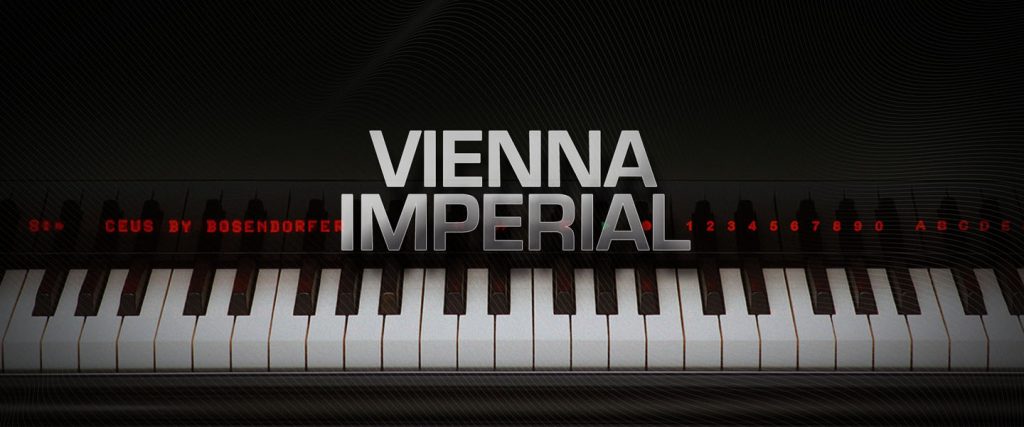
The Vienna Symphonic Library is world-renowned for its authentic splendor and nuanced sound quality. When it came to creating a virtual piano they brought the full weight of their expertise to bear on it. The instrument in question was the Bösendorfer Imperial 290-755 and they spent 2 months sampling it. And we’re not talking about setting up a few microphones and stitching together a virtual instrument. They recorded 1,200 samples for every key. That’s an unimaginable amount of data.
It was meticulously recorded in pedal-up and pedal-down in up to 100 velocities, sympathetic resonances, and multiple releases. It’s safe to say that the Vienna Imperial is the most realistic sampled piano ever captured and fills 69GB of space. Despite the complexity of the library, the interface is simple and intuitive where you can load the piano and play. Or if you want to get into the details of the sound and design your own unique take on the Bösendorfer Imperial 290-755, then you can do that, too.
Pros & Cons
- Incredible detail
- Multiple levels of sampling
- Sounds perfect
- Uses a huge amount of drive space
- Pricey
Why We Recommend: This is one of those software options that can be used by artists across all genres and it comes with bags of extra space to store your presents and projects.
E-instruments Session Keys Grand S
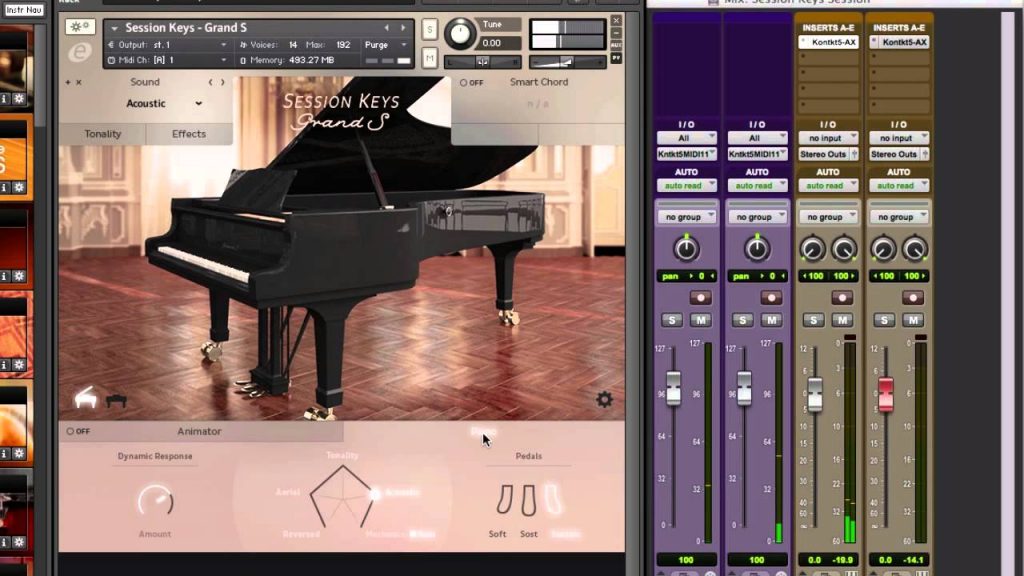
Another Steinway D captured into a simpler 11GB of sampled instrument. What E-Instruments do well is the straightforward, uncluttered approach to making excellent sounding instruments that are easy to use and work well in any environment. It works within the Native Instruments Kontakt engine and takes advantage of the modulation and animation possibilities.
You start with a fabulous Grand Piano sound with multiple microphone positions and with the lid off as well as up. That resulted in two quite distinctive characters which they’ve called the Concert and the Studio versions. The Concert version is bright and lively whereas the Studio is softer and better able to melt into a mix. Then they built in the ability to transform the sound with “Pentamorph” which is like a macro that shifts various characteristics to push it into different tonal areas.
The Animator section is designed to add harmony and phrasing around your playing which has the ability to inspire the less able players. There are over 400 flexible piano phrases that you can tweak and control the intensity of. Alongside is a Smart Chord tool which can add chord changes and arpeggiations to your notes.
Session Keys Grand S is ideal for the less advanced player and brings in tools that’ll improve the way you use a piano in your music.
Pros & Cons
- Two great-sounding piano tones
- Easy tonal changes on a single control
- Built-in chords and phrases
- Advanced players wouldn’t need the Animator side
- Not enough control for serious sound design
Why We Recommend: It’s pricey software, but you get what you pay for: quality sounds, effects for days, filters, and so many other features, to give your sound that extra special feel. It’s by far one of the most professional-friendly VST you can use for your music.
VI Labs Ravenscroft 275
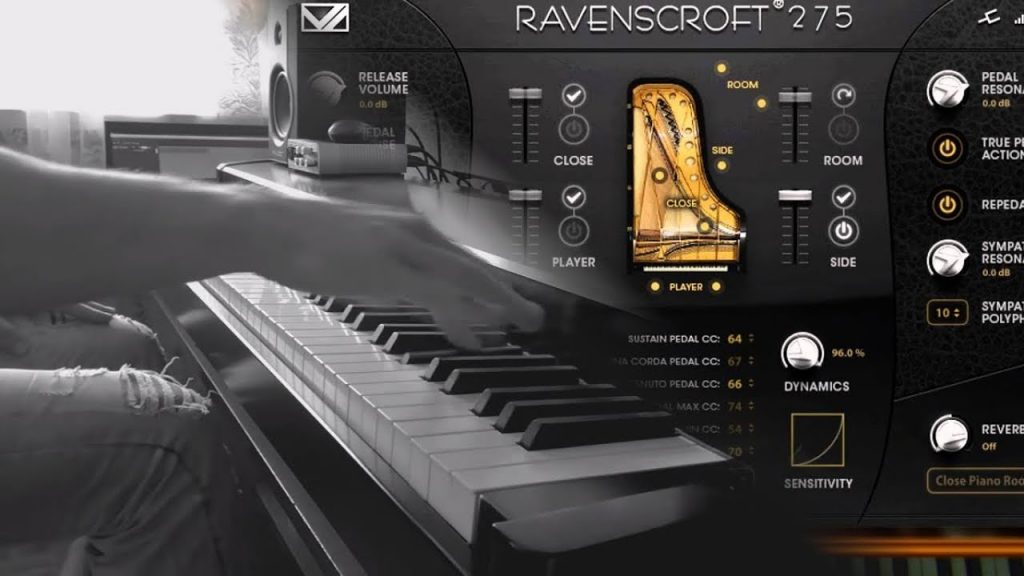
A more unique and specific instrument, the Ravenscroft 275 approaches the sampling level of the Vienna Imperial but aims for character and customization over simple authenticity. Within the interface, you have full control over the mixing of four microphones placed for the detailed sampling of this instrument. All the multiple layers are pulled together via a detailed scripting engine to ensure that what you hear follows the character and quirkiness of the real-life piano.
It has incredibly detailed samples of hammer attacks, muted strikes, staccato release trails, resonance, and pedal noises. You have lots of control over the tuning, the velocity curves, the amount of noise and expression given to every note and it’s an absolute joy to play.
Pros & Cons
- Detailed sampling of sound and noise
- Deep level of control over the character
- Sounds unique
- It’s just the one instrument
Why We Recommend: You can have this software on multiple computers for music production and be comfortable in the knowledge that everything will sync automatically. Are you a musician on the go? Make your life infinitely easier with the hands down most convenient VST on the market.
UVI Grand Piano
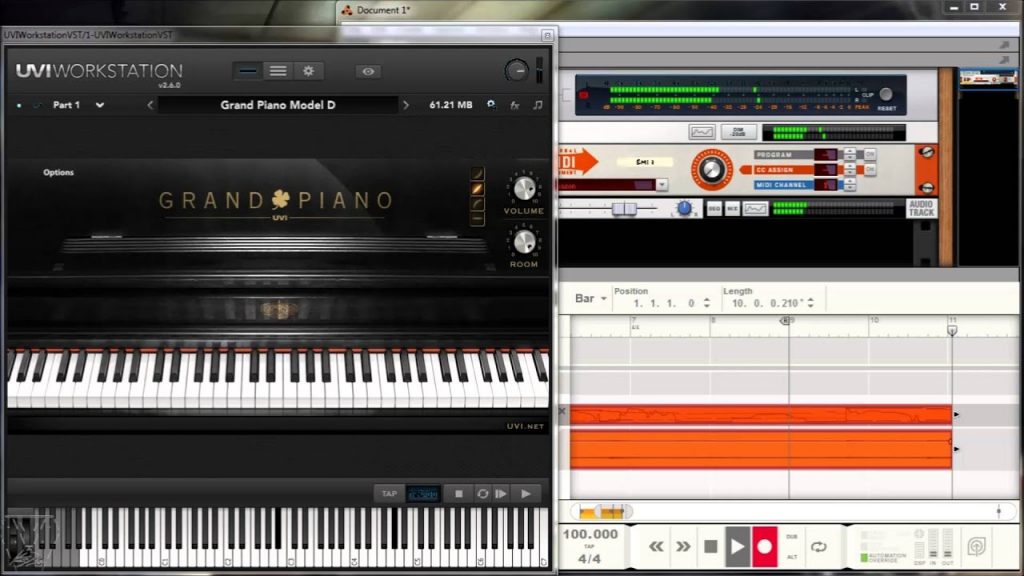
Our old friend the Steinway Model D gets sampled again for this great value instrument from UVI. Using similar deep level multi-sampling techniques and the best equipment on a fabulous European sound stage, they believe they have captured the essence of this majestic instrument. UVI doesn’t go into much detail about the process unlike many of the other instruments on this list and instead focuses on the stripped-down simplicity of what is a great-sounding piano.
Every care was taken to sample this piano at multiple velocity levels and with and without sustain. Rather than aiming for versatility and the ability to drastically change the tonal nature of the instrument, UVI has gone for a natural, realistic sound of this piano in this space. So this instrument plays exactly as you imagine it would. You have a bit of tonal control with some EQ and reverb. And then, over the top, they’ve added some nice synthesizer style elements such as envelopes, filters, and modulation.
It’s the cheapest piano on the list while being completely competent.
Pros & Cons
- Realistic Grand Piano
- Synthesizer elements for tweaking
- Only 1GB and easy on CPU power
- Great value
- No deep sound design within the instrument
- Less versatile
Why We Recommend: The UVI appears to be a favorite among many producers, and we aren’t surprised. The sampling was done well and with focus on accuracy. This allowed for a very realistic sounding piano VST plugin.
Conclusion
This Garritan Abbey Road VST is definitely our favorite. It truly feels as if you’re sitting in the studio at the piano. The clarity and overall sound quality of the instrument live on through the virtual sound. You can imagine how many music legends must have used this very same piano in their compositions at Abbey Road. If you haven’t worked with piano VST plugins before, don’t be put off by stories of MIDI problems and glitches. As long as you are running a system that exceeds the requirements of the plugin, you’ll be fine. When it comes to sound quality, we can confidently say that many VST’s outperform physical keyboards. But, like choosing any instrument, each VST excels in different areas, so always consider where and how you will be playing it most. Our list includes some of the best-selling and most realistic piano VST’s available, check them out and enjoy!
FAQs
What is Piano VST?
A “VST” is a software plugin format that uses your computer to emulate a real or imaginary musical instrument or effect. So a piano VST would be a software version of a real piano. You would more accurately call it a “VST Instrument” or “VSTi” in order to show that it’s a plugin that makes sound rather than an audio effect plugin, which is usually what “VST” refers to. There are many piano VST Instruments, ranging from exact models of acoustic grand pianos through to uprights, prepared, broken, or imaginary pianos. There are electric pianos of every kind, organs, and harpsichords so there’s plenty of choice.
Piano virtual studio technology is a software that emulates the sound of a piano. There is absolutely no piano hardware involved. You just need a MIDI controller, preferably with 88 total keys to emulate a real piano and a computer to play it on. This software can be hosted in DAWs like Ableton, Logic or FL Studio. These virtual pianos are created by recording actual pianos in a studio. The engineers behind VST software record all 88 keys of the traditional piano with a microphone. In order to get different variations, they’ll record several times as one key can have several sound variations. This is called a sampling piano VST. Some VSTs create the sound of the piano synthetically through digital code which imitates the sounds.
This type is known as the modeling type and has a more synthetic character; it doesn’t sound exactly like traditional piano keys. Sample VSTs can sound close to an actual piano, depending on their quality. This software is used by budding artists and professional musicians alike. Since not everyone can afford a piano, this type of virtual instrument provides musicians with a way to include piano sounds in their music. Many VSTs have additional effects and layers to add to the sounds, making them all the more useful in creating music.
Does a Piano Virtual Studio Technology Produce Realistic Sound?
The whole idea behind virtual studio technology software is to emulate the sound of piano keys. A VST made by experienced engineers using iconic pianos is perfectly realistic sounding, thanks to the time and energy which goes into recording these samples. You can’t expect 100 percent realistic sound, but in most cases, the variation is so small it goes unnoticed by the average listener. However, modeling VSTs are different. They are synthetically produced to imitate piano keys using digital tech. The sound is synthetic and isn’t as realistic as some producers would like. You can find all types of piano sounds on these VSTs and compose as you would on a real piano. In fact, with their wealth of features and effects, you’ll achieve new sounds from a different perspective.
How Do I Use a Piano VST?
Piano VST is software, so you’ll need a computer to run it. You’ll also need a MIDI keyboard to play the piano on the VST. A MIDI or Musical Instrument Digital Interface is a protocol that different electronic instruments use to communicate. This MIDI is your connection between a keyboard and the VST. You can easily find an 88 key MIDI keyboard to recreate piano sounds. Keep in mind, the MIDI itself doesn’t create sound. It simply sends the signal which correlates to the key you pressed to the VST so that it can produce the corresponding sound. The main task is still performed by the VST software.
To use the VST, you’ll need a program that can host the piano plugin. There are many professional software products you can use for this purpose. Just don’t forget to connect your MIDI keyboard! You can do this via a USB port or cable. If you don’t have a host program, there are some free versions available online. The host program can be used to play the Virtual Studio Technology plugins and once everything is set up, you can play the keys on your keyboard and you will hear the sound output of the amplifier. The host program can directly record whatever you’re playing and save it on your computer. VSTs that are equipped with effects can be played with these effects. An example would be reverb. It’s incredibly easy to apply these effects, but the exact interface will depend on your VST. You can also find presets that are similar to what you are trying to record.
Are Virtual Sample/Libraries Better Than a Digital Piano?
Digital pianos and piano VSTs are different but the end purpose is the same. Digital pianos have hardware and are stand-alone instruments in their own right, while virtual pianos are completely software-based. Each has its own pros and cons and it comes down to what is important for you as a musician. Digital pianos may not be able to give you the same amount of sound possibilities as a VST. VST software has thousands of samples and on top of that, add effects. The size of these libraries can be in tens of gigabytes. So you can imagine the vast amount of choice you have in terms of sound. VSTs also sounds very similar to the real thing, at least those sampled by experienced engineers from iconic pianos. The large size of these files means that you have different velocities and longer delays etc.
Even the budget digital pianos can give you more of a realistic piano feel in terms of playability. High-end digital pianos can be a lot more expensive than a VST and MIDI controller. At the end of the day, it depends on the kind of sound you are trying to achieve. If you like more room for experimentation, then perhaps VSTs are a better option. Many musicians prefer VSTs over electric keyboards for all these benefits in the studio and beyond. Because technology has improved so much over the years for both digital pianos and VSTs, choosing what is best for you can be a very tough call. Study each option and compare what it offers with your own musical aspirations.
Is Piano Virtual Studio Technology Good for Beginners?
If you’re new to the music world, you’d be wise to do your research before investing in musical instruments and software. To help make your journey easier, we’ll highlight some points that can help to make your decisions on what to buy. If you’re still learning the ins and outs of production, a piano VST can be a great support. VSTs can help the young, budding musician expand their reach. Having said that, we want to mention the importance of polishing your skills with DAWs as both are often used together.
Keep this in mind – when you’re just starting, things like which synth is going to complement your style might complicate things. Our advice is to stay consistent and try to learn the equipment and software first. Focus on creating and learning and the rest will follow.
How Hard is it to Master Piano VSTs?
As they say, good things don’t come easy. Piano VST can do wonders for your music but it takes time. You need to practice and practice hard to get the most out of it. Visit your local music store and spend time with people who already know what you’re trying to learn. Expert advice will help you progress. The Internet is also a powerful resource. You can join groups and forums to find answers to your questions.
What VST plugins do professionals use?
Waves is a good place to start. They have plugins for everything but pay special attention to the Studio Classics Collection and the Abbey Road Collection. Sold State Logic (SSL) offers their entire range of high-end plugins for a monthly subscription. Another option is to use DSP hardware from Universal Audio to run plugins that appear in your DAW but don’t use up your computer’s CPU power. These are the sorts of plugin collections you’ll find in every professional studio.
That said, when working in a professional environment the plug-ins that get used the most are the ones that are going to do the job right for that project. Doesn’t matter if it’s a freeware plug-in or something very expensive: what’s important is that it’s appropriate to the task. But there are some collections of plugins that professionals wouldn’t be without, as they contain some of the best hardware emulations that would end up in almost every project.
What is the best Synth VST?
Serum by Xfer is generally considered to be the finest software synthesizer ever produced. It’s a VST Instrument that offers complex and versatile wavetable synthesis at an amazingly high level of quality. The interface makes it easy to edit sounds and start being creative and if you want to get down to the details you can get to every parameter and even import your own custom wavetables. It looks fabulous, sounds amazing, and has been winning awards for years.
Are pianos the only VST instruments?
Not at all – piano VSTs are just a small percentage of sampled sounds available.
VST instruments categorize as orchestral samples, synthesizers and electronic soundscapes, and rock or jazz band scenarios, as well as instrumental effects and sound design. This is why sample libraries can get expensive really fast when you need a full library of sampled orchestral sounds.
It is also why the use of an SSD will make your workflow faster and more efficient. Imagine loading a DAW template with thousands of samples; with an SSD, the load time for samples decreases greatly.
How many instruments are included with a library?
This depends! You may be purchasing a single solo instrument or your library may include various instruments, different orchestral sections, etc.
Always check what is included with your library to know how many instrument samples you will receive.
The more instruments in a library, the more expensive it may be. Many libraries feature music track demos performed by musicians so you can hear what your samples have the potential to sound like. You should listen to these before you make a purchase.
How do I choose the best piano VST plugin?
There is no one answer to this question. A good place to start is to identify which acoustic piano brand produces the sound you prefer, whether a Steinway, Bösendorfer, Yamaha grand piano, etc. Many of these brands to have been recorded meticulously into sample libraries. You may also wish to have a piano sample for a particular style, such as a solo performance, a piano be blended in with an orchestra, or a recording in a jazz or rock band. Many VSTs are versatile and offer a solo patch as well as a piano sample that can be blended with other instruments.
Does bigger size (more GB) mean better quality?
Not necessarily…
Yes, the size of the library is an indirect indication of how meticulously the instrument was recorded, in other words how many samples were recorded at different dynamics per each key.The more samples is recorded per key the more expressive and dynamic the piano sound is going to be, though there are other important factors that can affect that. With that said, the size of the library, or in other words, the disk space it takes up after the installation can be a bit misleading.
The thing is that the final size of the library will largely depend on which format and audio compression method is used for samples.
Most high-quality piano VST libraries will use lossless audio compression, which preserves the exact copy of the original audio data, as opposed to lossy compression methods such as MP3, AAC, etc. However, some libraries use the original uncompressed files (PCM), which makes it considerable larger than libraries that use lossless audio compression and store their samples in formats like FLAC, ALAC, etc.
That’s why when you download the Garritan CFX Concert Grand, it weighs less than 20GB but when you actually install it, the library decompresses to PCM and requires more than 100GB of disk space. The Ravenscroft 275 and the Addictive Keys Studio Grands VSTs, on the contrary, require less than 6GB of disk space thanks for more efficiently organized storage using lossless compression formats. The Vienna Imperial is quite large in size but it’s still very efficient, considering that it contains around 100 velocity layers per key (the Garritan CFX has 20) and still needs twice as less disk space as the Garritan CFX.
Can I hear the sound of VST instruments via my keyboard’s built-in speakers?
The important thing to remember is that VST plugins are run on your computer/smart device.
So, it’s your computer (or whatever device you’re using) that generates the sound based on the MIDI data it receives from your keyboard.
In order to hear the VST plugin (or any other audio played on your computer) through your keyboard’s built-in speakers, you’ll need to route the audio signal back to your keyboard.



